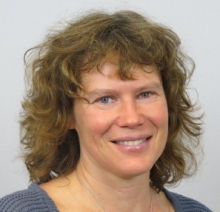Issue:
Switzerland has begun implementing its 20 year commitment on investing in improvements to cut the release of micropollutants to the aquatic environment from its sewage treatment plants. Keith Hayward spoke with expert Hansruedi Siegrist of Swiss research institute Eawag about the emerging view on treatment options and the early lessons for tackling the issue in other countries.

At the start of this year, new regulations came into effect in Switerland requiring around 100 of the country’s municipal wastewater treatment plants to be upgraded over the next 20 years to remove micropollutants – low level organic substances such as pharmaceuticals about which there is concern over their impact on organisms in the aquatic environment.
The Swiss action targets dissolved compounds, explains Professor Hansruedi Siegrist, an expert on micropollutants with research institute Eawag. The new regulations require extra treatment, a fourth step for conventional treatment plants, to be added in order to achieve an overall reduction of 80% in the micropollutants discharged. Some substances, including many covered by the European Union’s Water Framework Directive, bind by sorption to the sludge in treatment plants and so are not discharged into surface waters. ‘The compounds we are removing in Switzerland with our fourth step my be sorbed by 10-20%, but 80-90% passes through the plant, either partly degraded or transformed or not degraded,’ explains Siegrist. ‘The goal of this step is to remove these compounds, which are hormones, pharmaceuticals, pesticides, or certain industrial chemicals.’
Treatment options
The country committed to implementing improvements in the knowledge that there are treatment options available. One of the clearest options as far as the Swiss are concerned is the use of ozonation. This produces reactive hydroxyl radicals able to break down the contaminants. Activated carbon is the other current main contender, to remove contaminants by adsoption, and there is also the potential to combine ozonation and the use of carbon.
Siegrist explains that a battery of tests has been developed in order to determine whether a particular wastewater is suitable for ozonation. ‘It is a test which costs about CHF30-40,000 (€28-37,000) and goes over five levels,’ he says. This involves testing the ozonation and the level of hydroxyl radical production, the presence of bromide because of the potential for bromate formation during treatment, and carrying out some biological testing.
With this test available, ozonation can essentially be seen as a standard option for treatment, as long as the flow is found to be suitable for use of ozone. Siegrist therefore anticipates that technical guidance will be produced for this type of treatment.
The way ahead, though, is more complex. To begin with, not all plants will be suitable for treatment using ozone alone to provide the extra treatment. One of the two plants already constructed in Switzerland uses ozonation, the Neugut plant in Dübendorf. The other is the Herisau plant, which receives a significant proportion of its wastewater from the textiles industry. ‘We could see that the ozonation didn’t remove the dissolved organic carbon,’ explains Siegrist. Where industrial chemicals are present, they may not be degraded well by ozonation or may produce byproducts that would be of concern if discharged. The solution at Herisau was to instead install treatment using powdered activated carbon (PAC).
More significantly, work underway is showing that treatment for micropollutant removal is an evolving field. For example, testing at the treatment plant in Bülach is evaluating use of a granular activated carbon (GAC) stage. Siegrist says it had previously been assumed that background dissolved organic carbon in the wastewater would take up the adsorption capacity. While a greater volume of GAC is required compared to PAC, a factor in favour of GAC is that it can be recycled after regeneration, explains Siegrist. Work has included, for example, looking at the detention times for the GAC stage. ‘It seems if this is correctly operated, it could be very competitive to PAC,’ he says, adding: ‘This is knowledge that we just got in the last, say, one to two years.’
There is also increasing interest in combining ozonation and activated carbon. This, for example, could allow a lower ozone dosage to be used, avoiding the production of bromate or changing other products of ozonation.
The choice of treatment can also be influenced by the existing treatment system. ‘We have already seen, for example, that GAC could even be competitive with ozonation if a treatment plant already has filters that could be transferred to GAC filters,’ says Siegrist. As far as PAC is concerned, its use can be optimised in activated sludge plants by using it first in the micropollutant removal step and then returning it to the biological stage, in a countercurrent arrangement, but this kind of configuration does not work where the plant is based around biofilm system. And future issues may need to include assessing the costs and benefits of using renewable sources of energy or activated carbon.
‘At the moment there is more of a move towards ozonation, except for plants where there really is a problem with byproducts and industrial chemicals,’ concludes Siegrist. ‘If the tests with ozonation show no negative results, then a lot of plants will go with ozonation, because in a lot of plants there is not enough space for, say, PAC,’ he adds. Over time, the combined use of ozonation and carbon may well see increasing use, quite possibly involving GAC. ‘In perhaps ten years we will go in the direction of maybe partial ozonation and GAC, but we will see,’ he says.
A complicating factor in all of this is the speed with which municipalities will move forward with their upgrades, especially since the national government has introduced a tax on all customers to build an investment fund to implement the micropollutant upgrades. A lot of plants have made provision for the extra treatment in their extension or renovation plans, taking account for example of available space and the fit with existing biological treatment, but Siegrist cautions against moving too fast, especially given the work still underway on activated carbon processes. ‘We still need some years to get experience with these full scale plants, and the whole process will take some 25 years until the last plant will have this additional treatment step,’ he says. ‘The idea is not to push too fast – it makes sense to wait.’
A workable strategy for micropollutants
As far as treatment for micropollutants is concerned, the message from Switzerland is that this continues to be an evolving field, but that there is enough confidence around the available techniques for the country to have committed itself to the upgrading of its treatment plants. But treatment is just part of a wider picture, one that includes in particular the question of how to make a workable framework for regulating the whole effort. Here the Swiss approach offers valuable insights too.
There is a huge number of compounds that can enter and pass through wastewater treatment plants, even when pharmaceuticals alone are considered. The concern is that these compounds can have an ecotoxicological impact on aquatic life. ‘The idea in Switzerland is to remove ecotoxicity, not to remove a compound to a very, very low concentration. That was always the goal we have had,’ says Siegrist.
The Swiss approach is to base the action on micropollutants around a set of indicator compounds. ‘These represent all the compounds we would like to remove – compounds of concern in terms of ecotoxicity in the receiving waters,’ says Siegrist.
Siegrist explains that certain pharmaceuticals, such as diclofenac, are used widely and so tend to be found to a similar extent at most or all treatment plants. Other compounds can be present one day and not on another, or can be present only at certain treatment plants, due to the presence of a hospital or nursing home for the elderly, for example. ‘The indicator compounds we have selected more or less come very regularly, so they are easy then to analyse and to compare at the inlet and outlet of the treatment plants,’ he says. It was for this reason that one compound was removed from the Swiss regulation. The pesticide mecroprop is found in bitumen-based roofing materials. This source therefore only reaches wastewater plants in stormwater, making its presence too irregular for the purposes of the regulation, according to Siegrist.
The indicator compounds are tested for at the inlet and outlet of the treatment plant. The aim of the Swiss regulations is to achieve 80% removal across the plant as a whole, explains Siegrist. Since the goal of the regulations is also to improve treatment to deal with dissolved compounds not already removed, the indicator compounds are ones that are not substantially removed or degraded at the biological treatment stage. The indicator compounds also represent the chemical characteristics of micropollutants, such as having an aromatic group, and react with ozone or activated carbon.
Also, the group of 12 indicator compounds that has been selected can be assessed in a single laboratory test using a combination of HPLC and MS/MS, offering a practical approach to monitoring. ‘All the compounds are investigated in one step. It’s a very realistic test,’ says Siegrist. It costs around 350CHF, with the larger plants having to test inlet and outlet 12 times a year, he explains.
A European option
The Swiss approach contrasts with the approach to dealing with pollutants that is taken in, for example, the EU Water Framework Directive, where Siegrist says there is a focus on achieving particular concentrations for particular chemicals. For micropollutants, this presents a scenario where environmental regulators may set very low concentrations as a requirement. Operators of treatment plants could then face the prospect of having to add additional treatment without being certain they could meet the limits.
Germany is another country taking a lead on micropollutants and the focus to date has been on applying limiting concentration. Siegrist senses a change of outlook on this, in Germany as well as in other countries such as France, for example. ‘There are more and more suggestions that Germany will go for percentage elimination. They will probably go the same way as Switzerland – the more pragmatic way,’ he says.
Keywords:
- Switzerland, micropollutants, sewage treatment






